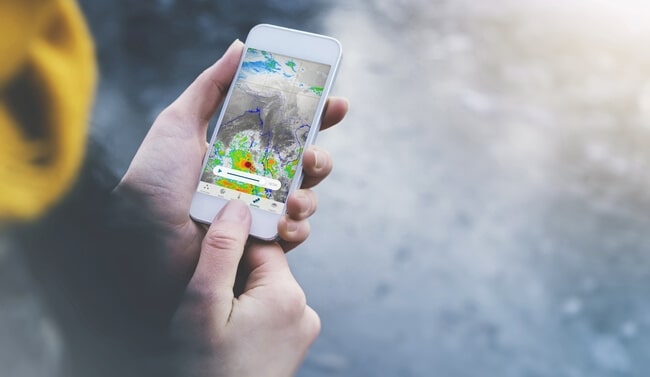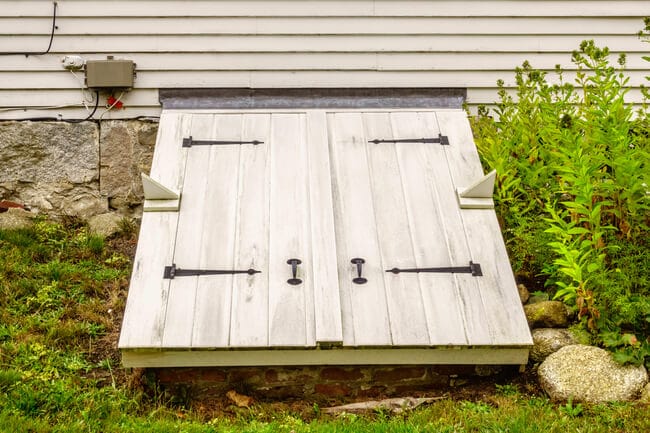
It’s no secret that tornadoes are dangerous. We’ve all seen news stories featuring the wake of destruction they leave in their path – leveled homes, uprooted trees, tossed automobiles. Maybe you’ve even experienced their devastation first-hand. While these natural disasters are most common in the Great Plains, other areas of the United States are also at risk of tornadoes. The best way to defend yourself and your loved ones against a tornado is to be prepared before they strike.
Tornado watches, and warnings are some of the most common notices given by local forecast offices to ensure residents of a particular area know of the risk. However, some people might need clarification about the difference between a tornado watch and a warning. What does each term mean? What should I do if I’m in an area with an active tornado watch/warning? Knowing the difference between a tornado watch vs. a warning could be the main reason between you and your family being safe or being vulnerable to harm.
 What is a Tornado Watch?
What is a Tornado Watch?
When a tornado watch is issued, there are weather conditions ideal for the formation of a tornado, but it doesn’t mean that one will definitely occur. A tornado watch is issued hours in advance by NOAA’s Storm Prediction Center (SPC) and usually encompasses several counties or sometimes even multiple states.
Typically, during the indicated tornado watch time period, weather will be uncertain, featuring one of more of the following:
- Thunderstorms
- Damaging winds
- Hail
- Heavy rain and flooding
What Should I Do During a Tornado Watch?

During a tornado watch, it’s essential to prepare for the possibility of a tornado forming. Here are some recommendations to keep in mind:
- Know the warning signs of a tornado. Look for ominous indicators like dark, greenish skies or the sound of a freight train. These are nature's alerts that a tornado may be approaching. Always heed official warnings and take immediate shelter when necessary.
- Have your emergency preparedness kit within reach. If a tornado forms, you’ll have the resources to quickly shelter or evacuate your home without worrying about leaving behind an essential item.
- Make sure your phone is charged, and you have a portable backup battery charger. Your electricity may go out, and having a phone to call for emergency services or check up on loved ones will be critical. A portable backup battery charger can recharge your phone or other devices that may be needed during the storm, such as a radio or flashlight.
- Keep a designated television tuned to a local news channel. Knowing when the storm develops and having that information available as soon as possible from a trustworthy source will allow you to be able to evacuate quickly.
- Locate members of your family and pets. The last thing you want to worry about is where your pet is as a tornado is headed your way. Knowing where they are and where their pet transporters or cages are will make the process much easier.
- Secure any loose items outside of your home that could be blown away. This includes lawn equipment, chairs, tables, or other debris that may be blown against your home or cause harm to others.
- Designate a safe spot in your home on the lowest possible floor and away from windows, like a basement, interior bathroom, or an under-the-staircase closet.
 What is a Tornado Warning?
What is a Tornado Warning?
A tornado warning means a tornado has been sighted in your area by trained professionals or detected by weather radar and that you should seek shelter immediately. This is more serious than a tornado watch, encompassing a smaller area and is issued by regional offices of the National Weather Service (NWS).
Tornado warnings can be issued without a tornado watch already in effect. They usually last about half an hour and will include where the tornado was located and what towns will be in its path. If there is an ampersand (&) symbol at the bottom of the warning, it indicates that the warning was issued as a result of a severe weather report.
If you live in areas like Tornado Alley, you’re used to tornado warnings. This area in the southern plains of the Central U.S. experiences a high number of tornadoes annually. However, other areas deeper South may experience similar warnings, so be prepared if this is the case.
What Should I Do During a Tornado Warning?

Once a tornado warning is issued, you and your family should grab your emergency preparedness kit and take shelter immediately in your dedicated safe space. Only leave your safe space once you receive a signal that the warning has been lifted. If you cannot reach your safe space, find a secure spot under sturdy furniture, like a heavy table, and stay away from windows, doors, and outside walls.
- If you are in your car during a tornado warning, attempt to drive to a nearby building to seek shelter. If you’re away from other buildings or cannot get into a building, park your car, and get out, following the instructions below.
- If you are outdoors, lie flat and face-down on low ground, such as a ditch, protecting your head. Never attempt to shelter under an overpass. Wind going through a narrow passage underneath the overpass may be stronger than the wind coming from the tornado, putting you at greater risk of being pulled into the funnel or hit by flying debris.
- Whatever you do – do not try to outrun the tornado either in your car or on foot. You may think outrunning a tornado is possible, but you may quickly find yourself stuck in a traffic jam or blocked by debris as a tornado barrels toward you.
Recover from Tornado Damage with the Help of Experts
Unfortunately, the work isn’t over when the tornado passes by. Severe weather can cause severe damage to your property, and it’s something that you need help to recover from. Here are some steps to take after tornado damage affects your property:
- Contact your insurance agent and ask for a damage assessment.
- Document the damage with notes and photos.
- Share these with your agent, along with receipts or information about any items damaged on your home inventory checklist.
An expert in tornado damage clean-up services, like ServiceMaster Restore, will be able to help you analyze the damage and find out how to best recover from the damage. They will walk you through your available options while ensuring you have the support you need during the process. If your home has been impacted by a tornado, find the ServiceMaster Restore location near you and see how we can best help you.